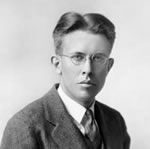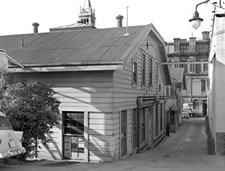
About the Ernest Orlando Lawrence Berkeley National Laboratory
 Ernest O. Lawrence.
Ernest O. Lawrence.
2006 marked the 75th anniversary of the founding of the Lawrence Berkeley National Laboratory, also known as Berkeley Lab. Located on a 200 acre site in the hills above the University of California's Berkeley campus, Berkeley Lab holds the distinction of being the oldest of the U.S. Department of Energy's National Laboratories. It is managed by the University of California.
 The first cyclotron.
The first cyclotron.
The Lab’s legacy began in the summer of 1928, when a 27-year-old physics professor named Ernest O. Lawrence was wooed from his faculty position at Yale University to a job at the University of California’s Berkeley campus. While at Berkeley, Lawrence invented a unique particle accelerator called a cyclotron which would prove his hypothesis: whirling charged particles around to boost their energies, then casting them toward a target is an effective way to smash open atomic nuclei. The cyclotron would go on to win Lawrence the 1939 Nobel Prize in physics and usher in a new era in the study of subatomic particles.
 The old Radiation Laboratory.
The old Radiation Laboratory.
Through his work, Lawrence launched the modern era of multidisciplinary, team science. In August of 1931, when he created the Radiation Laboratory in a modest building on the Berkeley campus, Lawrence began recruiting a brilliant circle of colleagues from physics, chemistry, biology, engineering and medicine, whose groundbreaking teamwork would be critical to the laboratory’s legendary success. When his plans for bigger and better atom-smashing cyclotrons required more room, he moved the laboratory off campus and up to its present location in the Berkeley hills, overlooking the San Francisco Bay. After his death in 1959, the Lab was officially renamed the Ernest O. Lawrence Berkeley Laboratory.
 The view from Berkeley Lab; the Advanced Light Source in foreground.
The view from Berkeley Lab; the Advanced Light Source in foreground.
Today, Berkeley Lab continues the tradition of multidisciplinary scientific teams working together to solve global problems in human health, technology, energy, and the environment. Twelve Nobelists have worked here, including the Lab’s sixth director Steve Chu. And countless other researchers have contributed to the Lab’s success as an institution for furthering our nation’s scientific endeavors, whether in fundamental research, science education, or technology transfer. Details about Berkeley Lab’s divisions and user facilities can be viewed here.